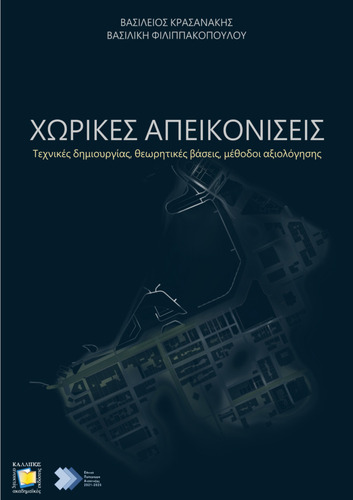| Title Details: | |
|
Spatial representations: Creation techniques, theoretical principles, evaluation methods |
|
| Authors: |
Krassanakis, Vassilios Filippakopoulou, Vassiliki |
| Subject: | ENGINEERING AND TECHNOLOGY > TECHNOLOGICAL SCIENCES AND ENGINEERING > RURAL AND SURVEYING ENGINEERING > CARTOGRAPHY- GEOVISUALIZATION LAW AND SOCIAL SCIENCES > PSYCHOLOGY > EXPERIMENTAL PSYCHOLOGY > SENSORY PERCEPTION > VISUAL PERCEPTION HUMANITIES AND ARTS > LINGUISTICS > MEANING OF LANGUAGE > SEMIOTICS/SEMIOLOGY |
| Keywords: |
Spatial representations
Cartographic symbolization Semiology Static maps Dynamic maps Animated maps Interactive maps Multimedia maps Visual perception Evaluation methods of spatial representations Eye movements |
| Description: | |
| Abstract: |
The book addresses spatial representations that include the traditional static maps as well as contemporary digital forms, such as animated maps, interactive maps and multimedia maps, distributed either in web or in local digital environment. An interdisciplinary approach is followed in analyzing the way of how all these media for geographic space representation function. Thus, theoretical principles and technological means supporting techniques of spatial representations creation, their way of functioning and evaluation methods are presented. Within the interdisciplinary approach, the basic principles of visual perception and cognitive processing of two-dimensional representations are referred, on which the analysis of reading and interpretation processes is based. Within the same framework, a brief report is made on the principles of semiology, which constitute the basic theoretical tool for creating rules on the cartographic symbolization and the analysis of reading and interpretation of spatial representations.
|
| Linguistic Editors: |
Pitsoli, Kalli |
| Graphic Editors: |
Misthos, Loukas-Moysis |
| Type: |
Undergraduate textbook |
| Creation Date: | 17-02-2023 |
| Item Details: | |
| ISBN |
978-618-5726-43-0 |
| License: |
Attribution - NonCommercial - ShareAlike 4.0 International (CC BY-NC-SA 4.0) |
| DOI | http://dx.doi.org/10.57713/kallipos-160 |
| Handle | http://hdl.handle.net/11419/9075 |
| Bibliographic Reference: | Krassanakis, V., & Filippakopoulou, V. (2023). Spatial representations: Creation techniques, theoretical principles, evaluation methods [Undergraduate textbook]. Kallipos, Open Academic Editions. https://dx.doi.org/10.57713/kallipos-160 |
| Language: |
Greek |
| Consists of: |
1. Introduction to spatial representations 2. Spatial entities: geometric types and levels of measurement 3. Basic principles of semiology and cartographic symbolization 4. Static maps 5. Dynamic maps & animated maps 6. Interactive maps & multimedia maps 7. Software tools for spatial representations creation 8. Basic principles of spatial representations visual perception 9. Visual perception and cognition – Cognitive schemata – Mental categories 10. Spatial representations evaluation: Qualitative and quantitative methods 11. Spatial representations evaluation: Eye movement analysis Additional Material |
| Number of pages |
173 |
| Publication Origin: |
Kallipos, Open Academic Editions |
| You can also view | |
| User comments | |
There are no published comments available! | |

